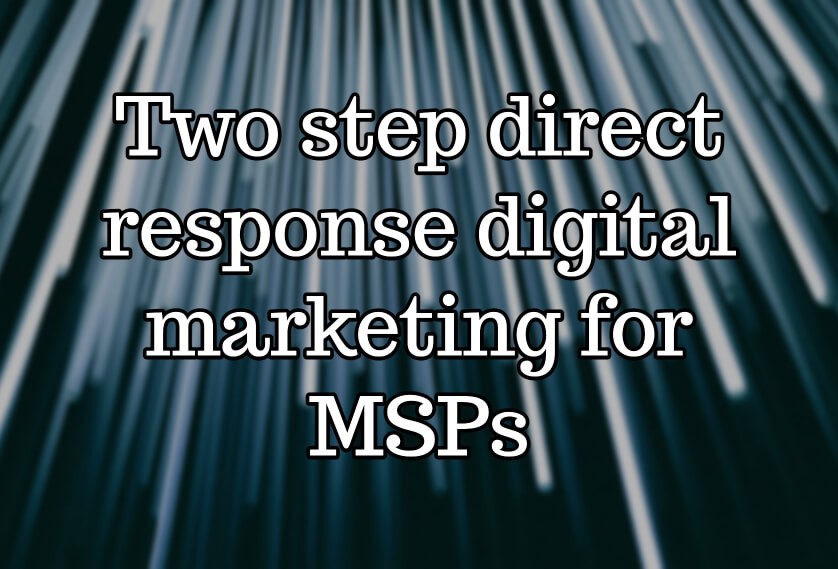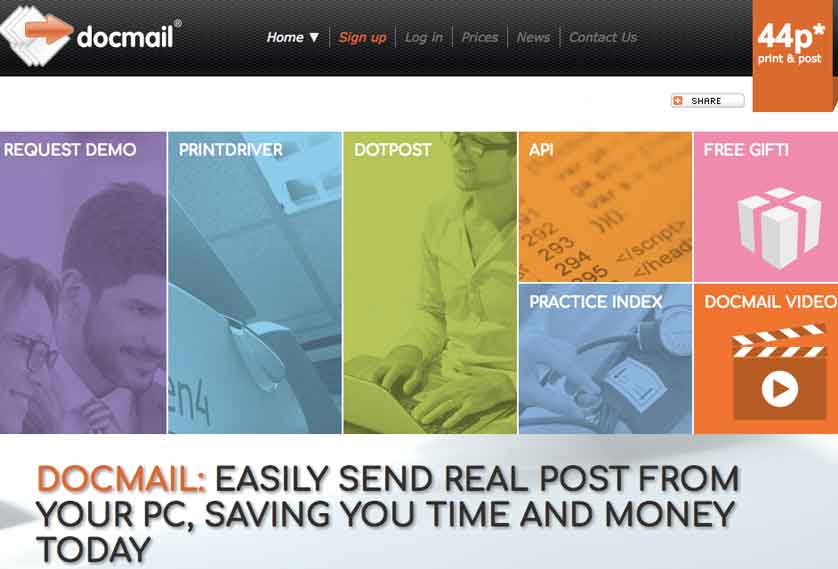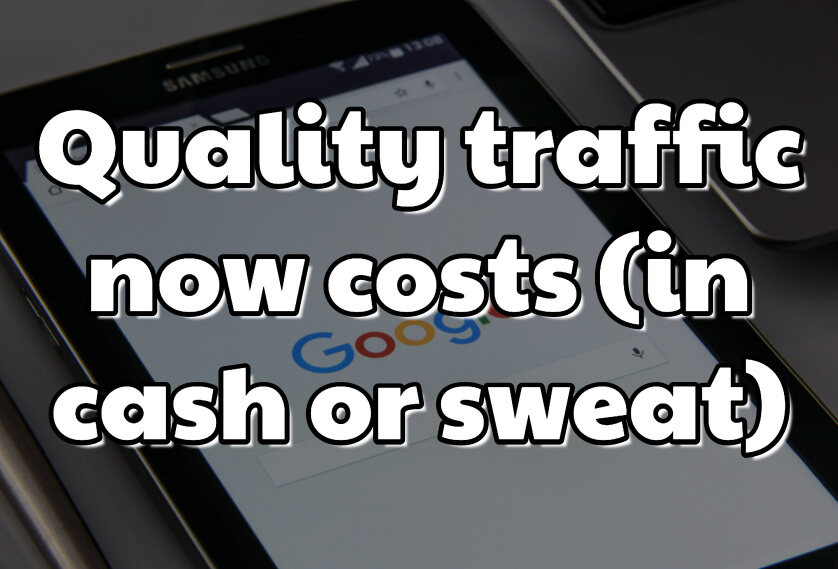What you’re about to learn in this post is not new. In fact, the theory is well over a hundred years old. But it’s only been in the last 10 or 15 years that small businesses like yours and mine have been able to use it.
Back in the 1980s and 1990s you needed dozens of operatives sat in call centres to achieve the results this system can generate. These days you just need a website and a bit of readily-available technology to power it.
Once you understand this system, you will see it in use everywhere. If it’s used by big businesses, they usually get it wrong. But you see fast growing businesses using it all of the time.
I was flicking through my in-laws’ Daily Express a few weeks ago (it's a UK newspaper), and saw an advert for mobility scooters. I know, my life is awesome 😃
The more I read, the more I realised that the mobility scooter company was using their version of two step direct response permission marketing. And when I looked into the business, I realised they were one of the market leaders in their sector.
In my mind, there’s likely to be a direct link between this system and their results.
Let's look a little closer.
The theory
The phrase two step direct response permission marketing is best explained by being broken down into its three separate parts. These can be explained very easily.
Two step
This means two step marketing. You see, most businesses use one step marketing. They put out an advert hoping to grab people’s attention, and that people responding to the advert will buy something.
Attention -> Sale
The step from attention to sale is the one step.
Most adverts you see are one step. The big car adverts, the banks, even device manufacturers, mostly use one step marketing. Certainly most adverts you see for MSPs are one step.
A better kind of marketing is two step marketing. You still catch someone’s attention, and of course you still sell them something, but there’s an additional step that goes in the middle.
Attention -> Relationship -> Sale
Before you ask someone to buy something from you, you first build a relationship with them.
Look at it this way. If you are married, you probably didn’t ask your other half to marry you on the first date, did you? That’s very very rare. Because on the first date we don’t really know the person. Before we commit ourselves to someone, we want to get to know them first.
Business is the same really, especially when it comes to picking someone as important as an IT support company.
Key message: Many people are wary of potential suppliers – especially when technology is involved, because they fear they won’t know when they are being ripped off. So the more they know someone; the better the relationship they have with them; the greater their trust. And the more they are likely to spend in the long-term.
So how do you build a relationship with someone BEFORE they become a client? Well, you first of all need to get their permission to talk, and then ensure that the conversation leads towards them picking you when they are ready to buy.
First, let’s look at the second part of this theory.
Direct response
This is the part of the process that’s only been possible for small businesses in the last 15 years or so.
And it’s the secret to making sure that every penny you spend on advertising and traffic gives you a fantastic ROI (return on investment).
You see, most adverts are what we call brand advertising. They are there to push the business name and logo. If ever you’ve found yourself putting an advert into a magazine or even online, just to “get your name out there” then you have done brand advertising.
And unwittingly, you have totally wasted your money.
These days, brand advertising doesn’t work. Shouting about your business and what it can do does not give a reliable response. Mostly that’s because there’s too much noise, competing for people’s attention.
Pre-Covid, I used to travel into London once a week for meetings. I once counted how many commercial messages I saw between getting off the train and getting to the meeting. It was only a 20 minute trip, but in that time I was exposed to dozens of adverts.
On newspapers; posters; on the radio playing away at a stall; shop fronts; the charity mugger in street trying to stop me; my Twitter app on the phone pinging away; the Big Issue guy…
If you had to take it all in and deal with it, us poor humans would be crippled with exhaustion every time we took a trip out of the front door!
So why aren’t we? Because of an amazing piece of our brain called the Reticular Activating System (RAS). All of your sensory information goes through this, and it decides whether or not it needs to flag it up to your conscious mind.
Here’s how to test your RAS. On your drive home later, keep an eye out for a specific colour of a specific car that you don’t own and don’t desire to own. Let’s say a red Ford Focus.
You’ll notice that there are loads of red Ford Focuses on the road today. But you know what... they were there yesterday as well. Your eyes saw them. But your RAS decided you didn’t need to perceive them so it didn’t bother to tell you about them.
This is why most advertising doesn’t work. There are too many messages and our RAS filters them out for us. Until we actually need them.
You could put your advert in front of someone every day for a year and they wouldn’t notice it. Until the day that their computer showed the blue screen of death. Or they found their IT setup was stopping them from doing something significant with their business.
Right at that moment their RAS kicks in… they “see” your marketing as if for the first time, and they are more likely to get in touch.
Key message: People only enquire or buy when they are ready to enquire or buy. The trick is to be in front of them at exactly that moment.
The problem is, that’s an expensive way for your MSP to market itself. Why advertise all year round, hoping to be in front of them at the point they need you.
A marketing strategy based on hope is wasteful and reduces net profit margins.
So instead, I recommend direct response in digital marketing for MSPs. Rather than just shouting about you and your business name, you offer them something.
Perhaps it’s a free information guide. or a copy of your book on email security (members of my MSP Marketing Edge service get a clever book called Email Hijack included in their membership). Or a series of educational videos. Whatever it is, it’s something low commitment that they can get right now, by responding.
Your adverts shouldn’t talk about your business at all. They should talk about the benefits of the thing you are giving away, and tell people how to get that thing. Normally by visiting a special data capture page.
And that’s it. The advert doesn’t need anything else. Extra information is clutter and will reduce your response.
Of course, to get the guide or book, the person responding to the advert needs to tell you who they are. And that’s what the final part of this is about.
Permission marketing
When someone has responded to your advert you want them to go through this process of data capture.
Essentially you ask them to give you their name and basic contact details, such as email address. The other thing you ask them is for their permission for you to market to them.
You can say something as simple as “we’ll send you our popular technology email once a week”.
People who give you their permission to market to them are much more likely to read what you send them. They are also much more likely to go on to become clients one day.
And the really beautiful thing is that it costs you very little to make sure you are in front of them at the exact moment that they are ready to pick a new IT support business.
You’ve got their permission to market to them. You are sending them emails regularly. They won’t read most of them. But at the point their RAS kicks in and they want or need IT support, you have a significant advantage over all of your direct competitors.
You know who the prospect is. You’ve got their contact details. You’ve got their permission to market to them. You’re in regular contact with them. You’re more likely to be in front of them at the right time. And they will feel like they have a relationship with you already, even if it’s a minor one.
And all of this can be automated. A highly efficient way to market your business while you are busy doing something else.
AIDA: A formula not an opera
One final thing I want to mention. When you create adverts to promote your business please make sure they follow a basic formula. In fact you should use this formula for every piece of marketing collateral you do – letters, business cards, websites, anything.
It’s called AIDA. Top marks if you recognise that as the name of an opera.
This acronym actually stands for:
Attention
Interest
Desire
Action
Attention: You catch someone’s attention with a great headline on your advert. A great headline is about them and not you. A bad example is “XYZ IT Support saves you money”. A good headline is “There are 7 ways your business could be hacked – and you can prevent six of them”.
Interest and Desire: You then need to build up someone’s interest and their desire to do the thing you want them to do – which is, of course visit your website.
Action: You tell them what to do. Literally, spell it out – this is how you respond, by going to this website address.






